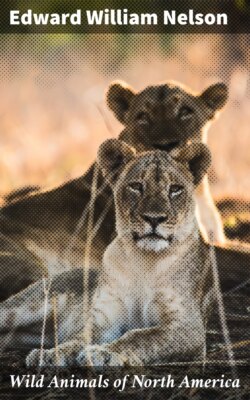Читать книгу Wild Animals of North America - Edward William Nelson - Страница 31
На сайте Литреса книга снята с продажи.
ARCTIC WOLF (Canis tundrarum)
ОглавлениеTable of Contents
In order to fit properly into a high northern environment, Arctic wolves have developed white coats, which they wear throughout the year. They are among the largest of their kind and have all the surpassing vigor needful for successful beasts of prey in the rigors of such a home. Nature is more than ordinarily hard on weaklings in the far North and only the fittest survive.
The range of the white wolves covers the treeless barren grounds bordering the Arctic coast of Alaska and Canada and extending thence across the Arctic islands to the north coast of Greenland beyond 83 degrees of latitude.
The short summer in the far North is the season of plenty, during which swarms of wild-fowl furnish a bountiful addition to the regular food supply. Young wolves are reared and the pack feeds fat, laying up a needed reserve strength for the coming season of darkness. When winter arrives lemmings and Arctic hares and an occasional white fox furnish an uncertain food supply for such insistent hunger as that of wolves, and larger game is a necessity.
In the northern part of their range they share with the other denizens of that land the months of continuous night. There, amid relentless storms and iron frosts, the trail, once found, must be held to the end. The chase is made in the gloom of continuous night and the white caribou or musk-ox herd is brought to bay, and by the law of the pack food is provided.
White wolves are the one dreaded foe Nature has given the musk-ox and the caribou in the northern wilds. The number of the wolves, as with other carnivores, varies with the abundance of their chief prey, and they will disappear automatically with the caribou and musk-oxen.
